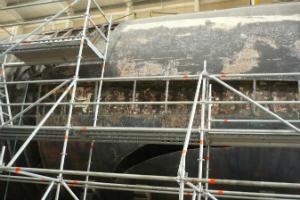 This mechanism allows to locate corrosion points, degrees of affectation, state of the structure, among other important variables to execute a good anticorrosive project.
This mechanism allows to locate corrosion points, degrees of affectation, state of the structure, among other important variables to execute a good anticorrosive project.
by Juan Manuel Álvarez*
As a concept, mapping corresponds to the location or identification of an object in a certain area (Image 1 - cover photo). Thus, corrosion mapping refers to the location of corrosion affectations in a given area. When an action of this kind is to be carried out, what is intended is to scan the surface determined for the work, which may well be a component, a part or a structure, so that corrosion is found and located throughout the surface to be inspected. (Image 2).
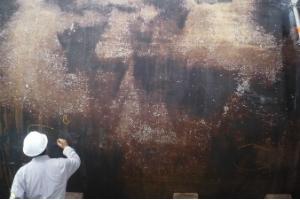
In theory, the above corresponds to work. But this really goes further. The corrosion mapping to be carried out in a component, in a part or in a structure, not only refers to the location of the corrosions present, but also to aspects such as the following:
1.La identification of corrosion according to morphology (type of corrosion).
2.La determination of the degree of affectation of the area.
3.The level of corrosion with respect to the affectation as a material, considering its mechanical responsibility.
4.La determination of the repairability of the corrosion found.
5.La location of faults, defects or discontinuities that in the short term are potentially areas with corrosion.
6.La determination of the state of the component, part or structure from the macro point of view.
7.La assessment of the applied products that have failed (Image 3).
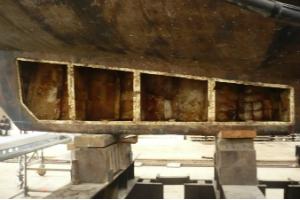
In addition to the above, there must be a purpose for the management of the results obtained in the mapping. Each of the above considerations led to the development of this article.
1.La identification of the type of corrosion in the mapping works is supremely important, since it relates us to the origin of corrosion in that area, relating it to some variable of the environment or to some mechanical work carried out by the material as a component, part or structure. Reporting the type of corrosion not only makes the report more technical, but helps determine the ideal corrosion control method in that area, allows the selection of the corresponding product, specifications, the correct treatment procedure and the type of monitoring and frequency with which the inspection must be met (Image 4).
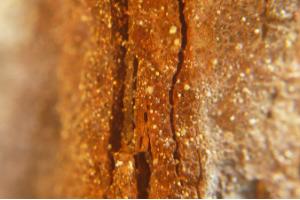
2.La determination of the degree of affectation of the area has to do, for example, with the assessment by visual inspections such as the percentage of the affected area with respect to the total area, the measurement of the bite density (number of bites per square inch) and with other considerations that must be taken into account and that refer to the presence of corrosion products and the modification of the appearance of the surface of the affected material (Image 5).
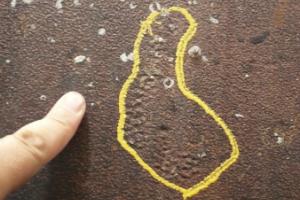
3.The level of corrosion with respect to the affectation as a material, considering its mechanical responsibility, refers to the incidence of some types of corrosion such as the case of pitting, where its depth decreases the mechanical resistance of the material.
The depth of pitting and its type (spherical, vermicular or conical), as well as the determination of the pitting factor lead to the categorization of the level of corrosion of the material, which will be related to the type of work environment (mechanical versus environment). Quantitative measurements or reports such as pitting depths, length of cracks or crevices, measurements of geometric modification by slits, erosion, abrasion or wear are what determine the level of corrosion affectation and will lead to the conclusion to determine whether it is repairable or non-repairable (Image 6).
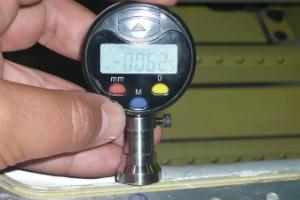
4.La determination of the repairability of the corrosion found is related to the mechanical responsibility of the material located in the component, part or structure and with the affected area according to the location in its geometry.
For example, the degree of involvement of a material by a conical type pitting with a depth of 4 thousandths (thousandths of an inch) is not the same if it occurs in a beam, in a reinforcement, in a sheet or in a former; in addition to that if this bite is in places where the geometry of the component, the part or the structure is an area of accumulation of stresses, of union, of assembly, of presence close to welding or of affectation of mechanical systems of fastening (bolts for example).
From this point of view, the concept of reparability of the area affected by corrosion will be limited and must be contemplated in the maintenance manual of the component, part or structure (Image 7).
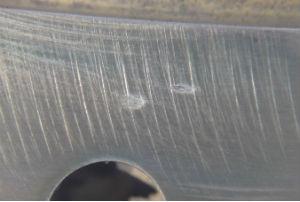
5.La location of faults, defects or discontinuities that are potentially areas with corrosion in the short term: this consideration in corrosion mapping must be taken into account since although no corrosion product is observed in the area where these failures, defects or discontinuities occur, it is known for sure that it is a matter of time (short term) for the reactions to generate corrosion that if they had been present previously would have reported as affected areas.
Examples of the above are scratches, anodic areas with respect to the adjacent surface, dents, anodic areas larger than the previous ones; erosions; the areas that may even present important voltage concentrators according to the area where they are located; frictions or wear involving the loss of material due to dynamic effects, leaving the surface exposed to the environment of the material surface environment; among other failures, defects or discontinuities that in the near future will show signs of corrosion (Image 8).
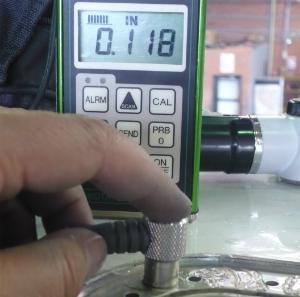
6.La determination of the state of the component, part or structure from the macro point of view: when all the information explained in the five previous points is recorded in a drawing, plan, map and even on the same component, part or structure, the "accumulated" affectation by all the present defectology will be observed and can be dimensioned at the macro level, and thus be able to conceptualize in the general state for repair, maintenance or change purposes.
Even for aging purposes it lends itself to the determination of the remaining life time of the component, part or structure. At this point, it is possible, with objectivity, to give recommendations that allow under the parameters of reliability if it is pertinent to allow this component, part or structure to continue in service (Image 9).
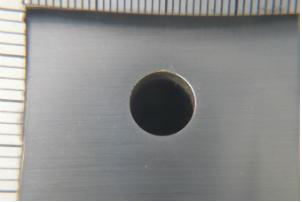
7.La assessment of the applied products that have failed: the presence of corrosion products, as well as failures, defects or discontinuities (potential areas of presence of corrosion products in the short term) are directly related to the affectation of the protection system of the component, part or structure, because they have failed as a corrosion control method.
Products applied as a corrosion control method can be reconsidered for change, or modify the specifications of the applied product, the preparation or application procedure, the frequency of inspection so that its repair is preventive, or the radical change of the protection system to another type of control method; for example, a more inhibitory coating, a coating per coating, a coating with more cathodic protection and more sealings, etc. Or also the procedure and frequency of the different maintenance that must be given to the coatings (Image 10).

Corrosion mapping works must generate a report (recording of the data obtained), an assessment of the protection system (analysis), a concept of the control method (reparability or change), and recommendations that allow to improve and give greater reliability to the component, part or structure.
The objective of corrosion mapping is then to know the general condition of the components, parts or structures, their repairability according to how they are, and their maintenance to give continuity to that component, part or structure.
The mappings carried out are important information for the elaboration and monitoring of corrosion control and prevention programs, as well as the fundamental basis for the aging program, topics that will be discussed in other articles.
* Juan Manuel Álvarez is a Consulting Member of the technical committees of NACE International, Member of A.S.T.M, of ACICOR (Colombian Association of Corrosion Engineers), of ASCOR (Colombian Association of Corrosion and Protection), of ACOSEND (Colombian Association of Welding and Non-Destructive Testing), of ICONTEC (Colombian Institute of Technical Standards), of the technical committees of END, Welding, Coatings, Fuels and others. He is also a university professor and lecturer. You can write to the e-mail: [email protected]
























Leave your comment